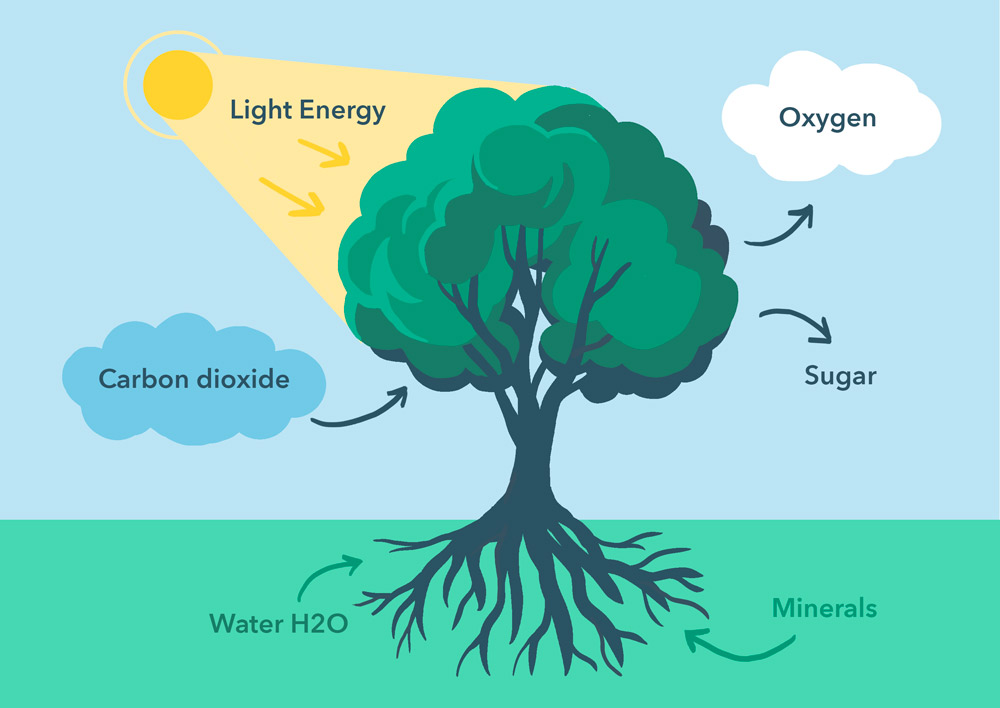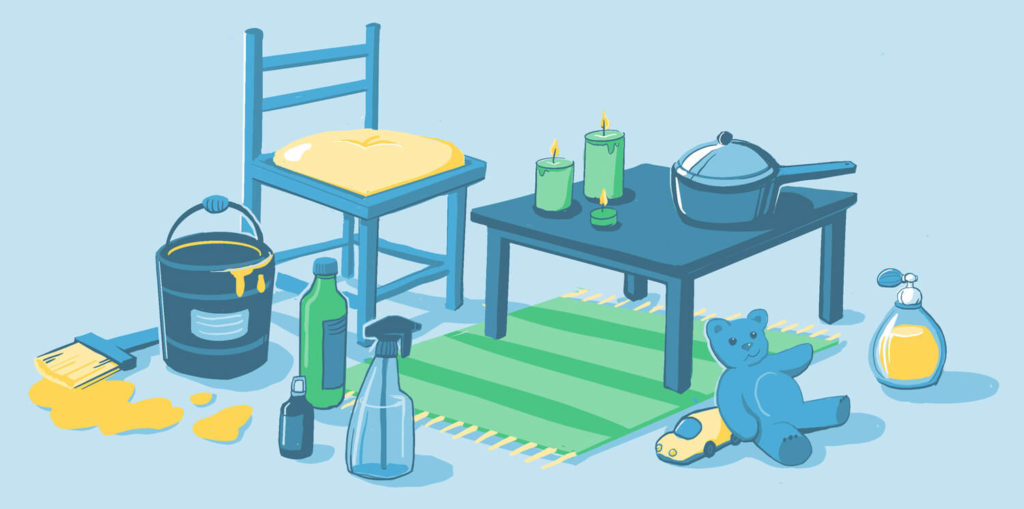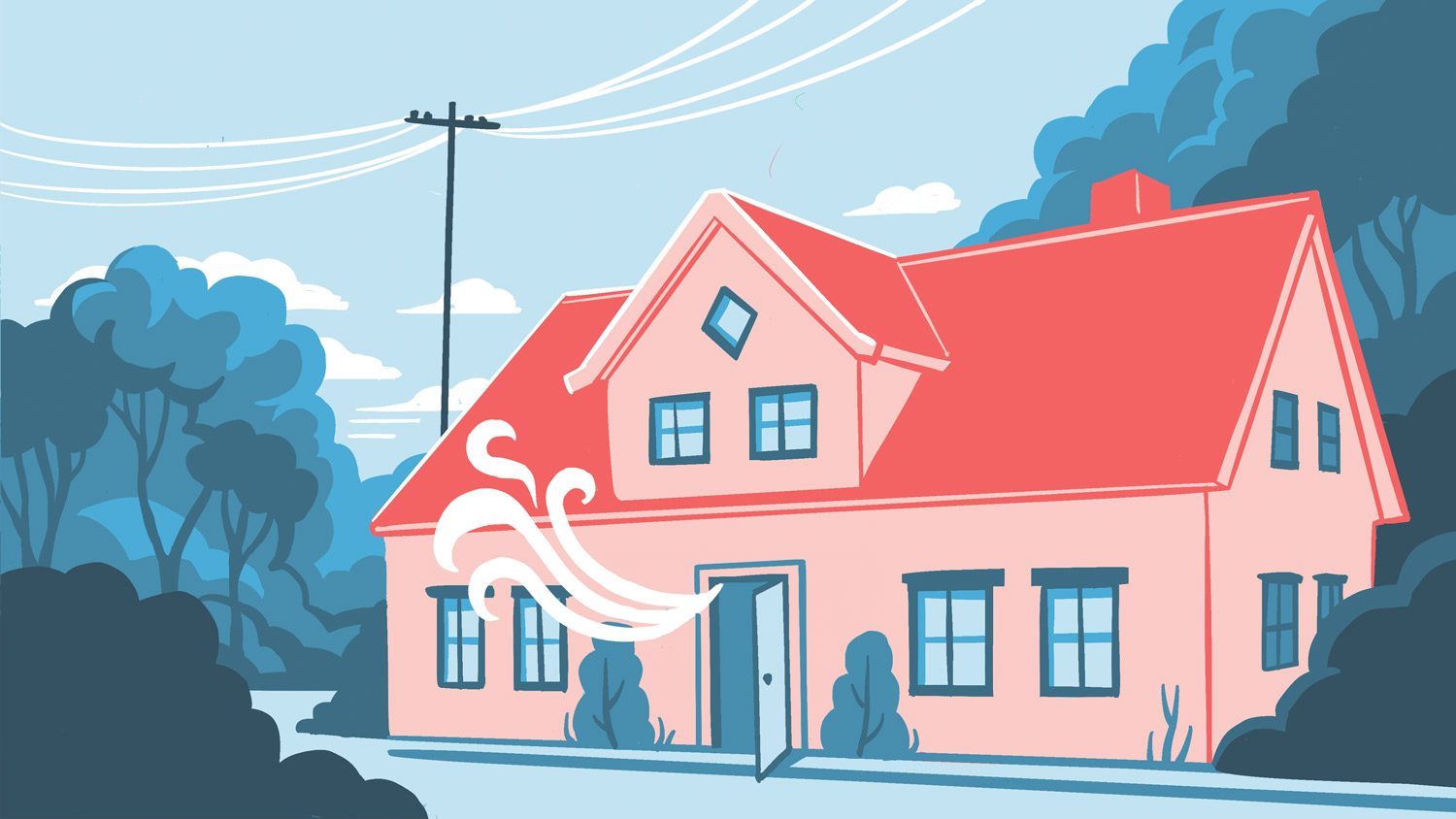What does outdoor air have to do with indoor air?
Humans need to breathe in air to survive.
The air is all around us. Air is outside as we play and walk in nature, but it is also indoors at home or at school.
The only place where there is no air is in space! That is why astronauts have to use special helmets, which connect to oxygen tanks so they can breathe.
The average person takes between 17,280 and 23,040 breaths a day.

The air can become trapped inside our homes. Have you ever been told to “let some fresh air in” by opening a window? That is because new air needs to be let in to refresh the indoor area.
Because it gets trapped, the air indoors can sometimes be a little bit different than outside. Making sure both indoor and outdoor air does not become too polluted is really important.
What is air pollution?
Air pollutionthe presence of substances above the natural level in the air Sources• https://www.ncbi.nlm.nih.gov/books/NBK368034/... More is the presence of substances above the natural level in the air. Polluted air can often be harmful to the environment and to humans. It’s when things that are not normally in the air, get added in.
Indoor air pollutiondust, dirt or gases in the air inside a building such as your home or... More is dust, dirt or gasesare made up of atoms or molecules that will fill the entire volume of any... More in the air inside a building such as your home or workplace that harms us if we breathe it in.
What is the difference between air pollution, climate change and global warming?
- Global warmingthe unnaturally quick rise of the Earth’s temperature, caused by the increased release of greenhouse... More means the unnaturally quick rise of the Earth’s temperature. It gets warmer.
- Climate changeunusual weather found in a place as a result of global warming. This can include... More is unusual weather found in a place as a result of global warmingthe unnaturally quick rise of the Earth’s temperature, caused by the increased release of greenhouse... More. This can include the side effects of global warmingthe unnaturally quick rise of the Earth’s temperature, caused by the increased release of greenhouse... More, such as melting glaciers, heavier rainstorms, or more drought.
- Air pollutionthe presence of substances above the natural level in the air Sources• https://www.ncbi.nlm.nih.gov/books/NBK368034/... More causes climate changeunusual weather found in a place as a result of global warming. This can include... More and global warmingthe unnaturally quick rise of the Earth’s temperature, caused by the increased release of greenhouse... More. Air pollutionthe presence of substances above the natural level in the air Sources• https://www.ncbi.nlm.nih.gov/books/NBK368034/... More is the presence of substances above the natural level in the air. Polluted air can often be harmful to the environment, by trapping heat from the sun, and to humans, by irritating our lungs.
These three things can affect the air we breathe in every day.
The greenhouse effect
Have you ever been in a greenhouse? Plants thrive in this environment because the glass allows lots of light in, while still trapping the heat to keep them nice and warm. The Earth’s atmosphere acts as a greenhouse. It allows sunlight to reach the planet, while gasesare made up of atoms or molecules that will fill the entire volume of any... More in the atmosphere help trap heat, keeping the temperature within a livable range. This is one of the reasons there is life on Earth, while there isn’t life on other planets. The greenhouse effectthe process of specific greenhouse gases in the atmosphere trapping heat and warming the Earth.... More is the name for the process of specific greenhouse gasesare made up of atoms or molecules that will fill the entire volume of any... More in the atmosphere trapping heat and warming the Earth. The light from the sun hits the planet and bounces back to the sky, but some of it is reflected back to the atmosphere by these gasesare made up of atoms or molecules that will fill the entire volume of any... More.
What are some things you may find in the air in your home?

The air indoors comes from outside. But it can become trapped, and different things inside a home or building can influence the air inside a home.
Oxygen
This should definitely be in the air! It’s an odorless, colorless gas, and all humans need it to survive. Plants create oxygen in a process called photosynthesisthe process by which plants (and some other living things) make their own food. Unlike... More.

Nitrogen
Nitrogen is a key odorless, colorless gas to our air. The air is approximately 78 percent nitrogen and 21 percent oxygen.
Water vapor
When water is heated to a high enough temperature, it forms a gas, called water vapor. Its chemical symbol is H2O. Like liquid water, it is odorless and colorless.
Carbon dioxide
An odorless, colorless gas, naturally present in our atmosphere. Its chemical symbol is CO2. The things humans do affect how much CO2 is in our atmosphere. Living creatures including animals and humans breathe it out into the air, whereas plants remove it from the air during photosynthesisthe process by which plants (and some other living things) make their own food. Unlike... More. It is natural, but too much can be released into the atmosphere from the burning of fossil fuelsnon-renewable resources, such as oil and gas, that are burned for energy. When they are... More. This contributes to the greenhouse effectthe process of specific greenhouse gases in the atmosphere trapping heat and warming the Earth.... More.

Airborne chemicals (VOCs)
VOCs stands for Volatile Organic CompoundsCompounds are made up of one or more elements in a fixed ratio More, which are a wide range of colorless gasesare made up of atoms or molecules that will fill the entire volume of any... More and odors. They come from many different toxins and chemicals found in household products.

Mold spores
Mold is a fungus. It’s the black gunky stuff you may see around window sills or on walls. The mold you can see creates spores that are so small that they can hang in the air and are actually invisible to the naked eye! You would have to see them through a microscope before they land on walls or window sills.
Radon gasa naturally occurring, radioactive gas that comes from the breakdown of naturally-occurring radioactive elements like... More
Radon gasa naturally occurring, radioactive gas that comes from the breakdown of naturally-occurring radioactive elements like... More is naturally in the atmosphere in trace amounts, however, in high quantities, it can be dangerous to human health. It is odorless and colorless.

Question: How many of these are odorless and colorless gasesare made up of atoms or molecules that will fill the entire volume of any... More?
Answer: 5: water vapor, oxygen, nitrogen, radon, carbon dioxide! They are all odorless, colorless gasesare made up of atoms or molecules that will fill the entire volume of any... More.
Sources
- https://blog.epa.gov/2014/04/28/how-many-breaths-do-you-take-each-day/#:~:text=The%20average%20person%20takes%20between,are%20exposed%20to%20air%20pollution
- https://www.ncbi.nlm.nih.gov/books/NBK368034/
- https://www.who.int/health-topics/air-pollution#tab=tab_1
- https://www.nasa.gov/audience/forstudents/k-4/stories/nasa-knows/what-is-climate-change-k4.html
- https://www.climate.gov/news-features/climate-qa/whats-difference-between-global-warming-and-climate-change#:~:text=What’s%20the%20difference%20between%20global%20warming%20and%20climate%20change%3F,-Author%3A&text=Global%20warming%20refers%20only%20to,rainstorms%2C%20or%20more%20frequent%20drought.
- https://www.ncbi.nlm.nih.gov/books/NBK368034/
- https://www.who.int/health-topics/air-pollution#tab=tab_1
- https://climatekids.nasa.gov/10-things-air/#:~:text=So%20what%20is%20air%2C%20exactly,dioxide%2C%20neon%2C%20and%20hydrogen
- https://www.epa.gov/radiation/what-radon-gas-it-dangerous



